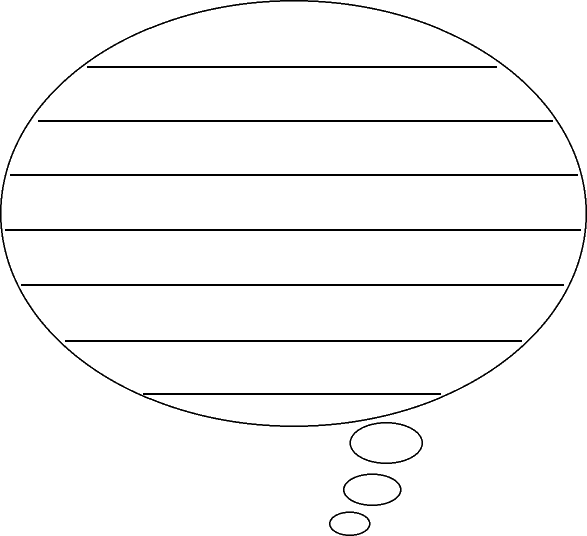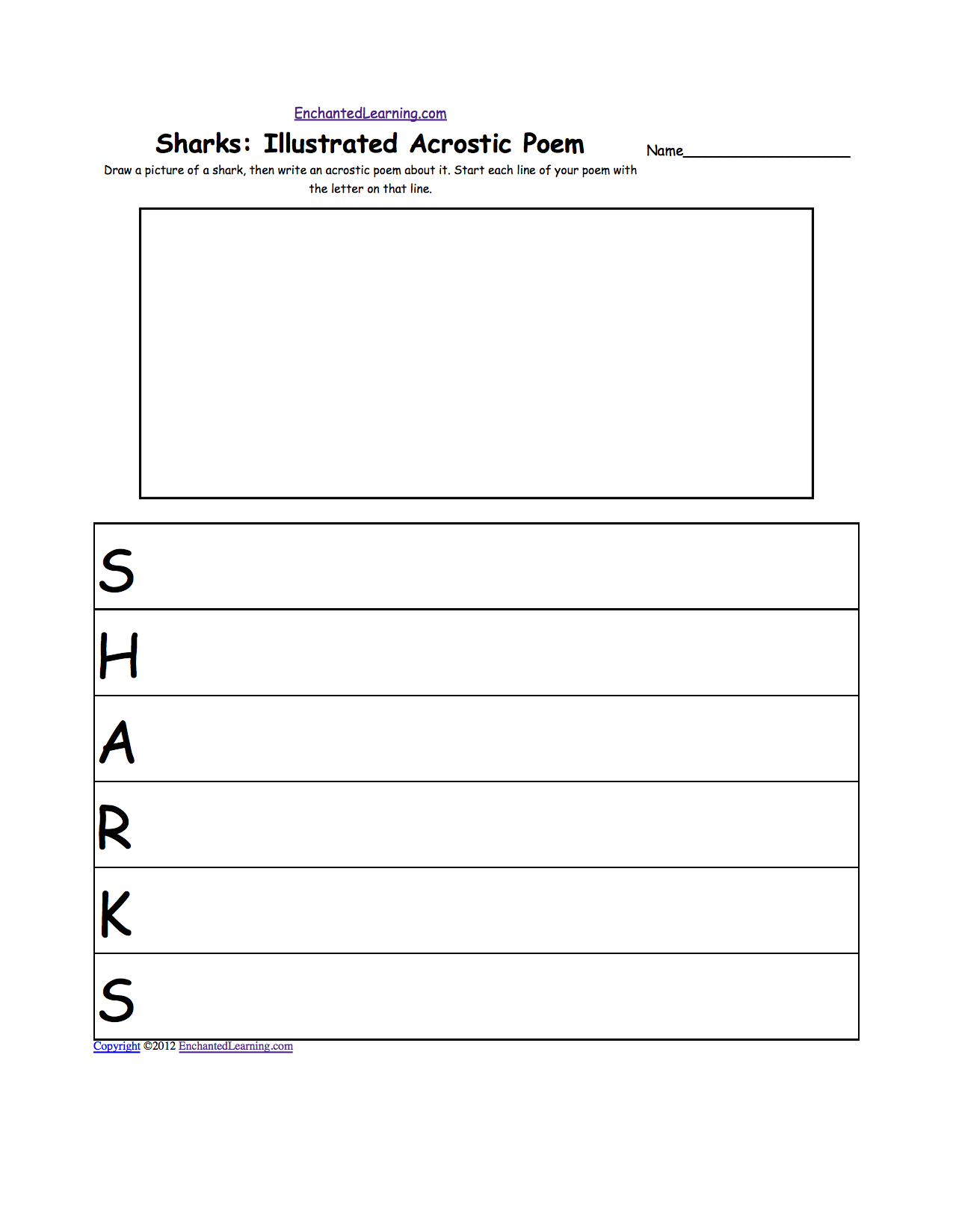Shark Crafts and Activities
Spelling and Writing Worksheets:
Math and Graphing Worksheets:
All About Sharks: A Shark Information Site:
Shark Printouts to Read and Color:
Rays:
For further information log on website :
http://www.enchantedlearning.com/subjects/sharks/classroom/Classroomweblinks.shtml
| SHARK COLORING BOOK A shark book you can print out and color in. | OCEAN DIORAMA Make an ocean scene in a box. Print out the sharks and whales, then color, cut, and hang them in a decorated box. | SCARY SHARK POP-UP CARD Make a pop-up card that a friend will always remember! |
Spelling and Writing Worksheets:
Sharks: Cloze ActivityFill in the blanks in the short reading passage using words from the word bank. Or go to the answers. | Rewrite the Paragraph about SharksRewrite the paragraph, correcting the capitalization and adding punctuation marks. Or go to the answers. | Great White Shark: Word Hunt WorksheetHow many words can you make using the letters from "Great White Shark"? Sample answers: target, gash, heart, ... Go to worksheet with 30 blanks or a worksheet with 50 blanks. |
Shark Poem - Poetry PromptWrite a poem about a shark. The lines of the poem begin with: It sees, It hears, It feels, It understands, It moves, It needs, It runs, It wants, It eats, and It dreams. | Shark Thoughts: Writing Prompt  Write inside the thought bubble, expressing the thoughts of the shark. Or go to a pdf of the worksheet. | Write Ten Things About SharksA one-page printable worksheet. Write ten things about sharks (plus one thing you would like to change). |
 Sharks: Illustrated Acrostic PoemDraw a shark, then write an acrostic poem about it. Start each line of your poem with the letter on that line. Or go to a pdf of the poem. Sharks: Illustrated Acrostic PoemDraw a shark, then write an acrostic poem about it. Start each line of your poem with the letter on that line. Or go to a pdf of the poem. |  Shark: Fact or Opinion? Color the picture of the shark, then write 5 facts and 5 opinions about sharks. A fact is supported by evidence and can be proven; an opinion is how you feel about something and is open to debate. Or go to a pdf of the worksheet (subscribers only). |  Unscramble Adjectives: Adjectives Describing A Great White Shark Unscramble the adjectives describing a great white shark. Go to the answers. Or go to a pdf of the worksheet and the answers (site subscribers only). |
Math and Graphing Worksheets:
First Grade Math Games - PrintableThe student does simple addition problems and letter substitutions to answer a shark question. | Graph Shark SizesGraph the lengths of many sharks, then answer simple questions about the data. |  Sharks: Reading and Understanding Tables Use the table to answer the questions about sharks. Or go to the answers. Or go to a pdf of the quiz and the answers (site members only). |
All About Sharks: A Shark Information Site:
All About SharksLearn facts about sharks, see where they live, what they eat, and find out which sharks are the biggest, smallest, fastest, etc. |
Shark Printouts to Read and Color:
Shark AnatomyLabel the shark external anatomy diagram. Answers | Shark: Printable Read-and-Answer WorksheetA printable worksheet on sharks with a short text, a labeled picture, definitions to match, and questions to answer. Or go to the answers. | AngelsharksBottom-dwelling, relatively harmless sharks with flattened bodies and a blunt snout. | Atlantic Sharpnose SharkA harmless requiem shark with a sharp snout. |
Basking SharkA huge filter feeder and the second largest fish. | Basking Shark (Simple version)A huge filter feeder and the second largest fish. | Blue SharkA sleek, fast-swimming shark with blue skin. | Bull SharkA blunt-nosed, dangerous, gray shark that can also live in fresh water rivers and lakes. |
Bull Shark (Simple version)A blunt-nosed, dangerous, gray shark can live in fresh water rivers and lakes. | Cookiecutter SharkA small shark that takes circular bites out of its prey. Also known as the luminous or cigar shark. | Dogfish SharkSmall, very common, relatively harmless sharks found worldwide. | Galapagos SharkA large predator found near islands in warm water. |
Goblin SharkA bottom-dweller with a long, flattened snout. | Great Hammerhead SharkLarge predators with a hammer-shaped head. | Great White SharkAn enormous, ferocious predator found worldwide. | Great White Shark Simple VersionEnormous, ferocious predators found worldwide. |
Greenland SharkA large, slow-swimming shark with glow-in-the-dark eyes. | Lemon SharkLarge, yellowish predators found near the surface and at intermediate depths. | Luminous SharkA small shark that takes circular bites out of its prey. Also known as the cookiecutter or cigar shark. | Mako SharkLarge predators that are the fastest fish!. |
MegalodonA huge, extinct shark. | MegamouthA large, filter-feeding shark that was only discovered in 1976. | Nurse SharkLarge bottom-dwellers with rounded fins. | OrthacanthusA spined, extinct shark. |
Port Jackson SharkA shark from waters off southern Australia. | Sandtiger Shark (Sand Shark) A shark that is cannibalistic before birth. | Thresher SharkThe Thresher Shark is a shark whose tail fin has a greatly elongated upper lobe. | Tiger SharkLarge predators found worldwide in warm seas. |
Whale SharkThe largest fish and a filter feeder that eats tiny marine organisms and small fish. | Zebra Bullhead SharkA bottom-dwelling shark with zebra-like stripes. |
Rays:
Manta RayThe largest ray. | RayFlattened fish that evolved from sharks. |
For further information log on website :
http://www.enchantedlearning.com/subjects/sharks/classroom/Classroomweblinks.shtml




